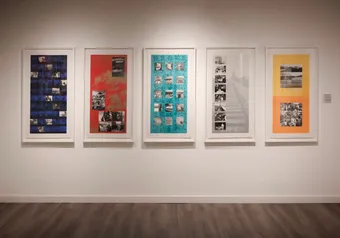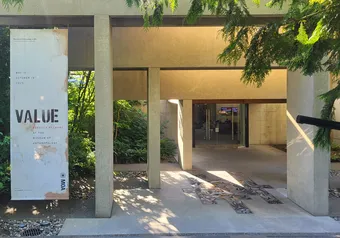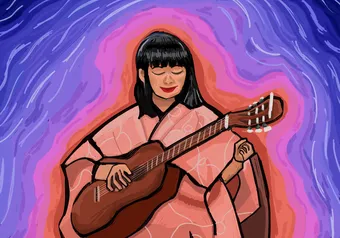In the following article you will see a set of interview questions regarding Art of Living's upcoming session, Happiness Project, which will take place July 7 to 10, 2016. You may want to know who is hosting the program and what it is all about before deciding whether or not to attend. Well, you're in luck! The Ubyssey was given the opportunity to interview representatives from the organization to get an idea of just who is behind it all.
With all the media lately surrounding “cultish” yoga schools and institutions it is better safe than sorry so you'll also get an investigation into the history of the organization. This article will examine what was found about them, though not for the reason of trying to defame them but rather for you to have all the information so you can assess for yourself if this program will be beneficial for you or not. The interview questions will also be included throughout so you can see the whole picture.
The Ubyssey: Can you tell us what the Happiness Program is in 150 characters or less?
Expert: The Happiness Program is a profound personal development experience that has helped millions uncover the keys to happiness and joy, and make breakthroughs in their personal and professional lives. Students discover "the how" of lasting happiness and powerful tools to eliminate stress, increase energy levels and productivity, and manage negative thoughts and emotions.
Sri Sri Ravi Shankar will be teaching the upcoming Happiness Program at UBC (Student Rec Centre) from July 7-10th. More information: happinessprogram.ca/srisriravishankar
A simple Google search for "Sri Sri Ravi Shankar scandal" will pull up a multitude of articles detailing various scandals and accusations, mostly about property "grabs" that the foundation has been accused of doing (Ten Curious Scandals of Indian Swamis and In Artful Living Sri Sri and Nityananda Have Much In Common). Though a few complaints have been made it appears that there was nothing explicitly against them and nothing was taken to court.
The interviewees were very friendly. There were three consultants in total: one who initially reached out to the Ubyssey, one who called to follow up and one who answered our questions. Since it is unclear who is answering all of these questions they will be referred to with plural pronouns.
U: The Happiness Program is split into two groups - 1.0 and 2.0. Can you tell us a bit about each program?
E: Happiness 1.0 provides:
- Breathing techniques to relax mind and body
- Tools to increase energy
- Yoga for health and circulation
- Guided meditations
- Introduction to Sudarshan Kriya.
Happiness 2.0 provides:
- Tools to eliminate stress, anxiety, depression
- Practical wisdom for lasting joy and harmony in relationships
- Improve focus, sleep patterns and energy levels
- Guided meditations with Sri Sri
- Complete experience of Sudarshan Kriya
- Instructions on daily home practice of Sudarshan Kriya
After learning the foundational tools in Happiness 1.0, those that wish to take this experience further and learn some of the more in-depth take-home tools, can go on to the Happiness 2.0.
"Kriya" is a sanskrit word for 'action', 'deed', or 'effort'. A kriya is practiced for a particular outcome, and there are various kriya's that have been taught over the years. The Happiness Program teaches one in particular - the Sudarshan kriya - which you can read more about below. All the practices they teach can certainly be beneficial and provide the various outcomes they've mentioned. There are links to various research studies below.
U: It seems a big part of the program is the Sudarshan Kriya. What is a kriya? How would you describe this particular kriya?
E: Sudarshan Kriya is a rhythmic breathing practice that helps harmonize the rhythms of the emotions and body and syncs them with nature’s rhythm. The breath connects the mind and body. Just as our patterns of breathing are affected by our emotions, we can change our behavioral and mental patterns by changing the rhythm of our breathing. It eliminates worry, anxiety, and anger and leaves the mind energized and relaxed.
It also enhances inner healing and stimulates heightened alertness. Research studies have found that the EEG (electroencephalogram) brain wave patterns in a group of Sudarshan Kriya practitioners has an increase in EEG alpha activity coupled with significantly greater EEG beta wave activity than a group who do not practice Sudarshan Kriya. This result indicates a state of relaxation and healing co-existing with heightened alertness that can benefit in:
- Faster and sustained recovery from depression
- Smiling more times a day & reconnecting with everyone easily
- Increased productivity
- Increased learning abilityIncreased Success
U: How long has the Sudarshan Kriya been practiced? Where does it come from? For instance, are there texts that teach it, or particular teachers or schools of thought that established it, etc.?
E: In 1981 Sri Sri Ravi Shankar went into silence for a period of 10 days and during this time Sudarshan Kriya came to him. Through the Art of Living the Sudarshan Kriya has been taught and practiced for the last 35 years.
U: What research has been done into this kriya and what are the results? What are the observable benefits of this practice?
E: Practiced by millions of people around the world, the Sudarshan Kriya’s effects have been independently studied by leading psychologists, neurologists and mental health professionals, and published in peer-reviewed journals around the world. Research has shown that continued practice of Sudarshan Kriya leads to dramatic reductions in anxiety, stress and depression. Its practice also sharply enhances brain functioning, productivity and the immune system, along with cardiovascular and respiratory functions. In fact, Emma Seppälä, Science Director of Stanford University’s Center for Compassion and Altruism Research and Education and author of “The Happiness Track,”has taught Sudarshan Kriya to war veterans diagnosed with PTSD. Even in Vancouver, the eminent neurologist Dr. Ryan Punambolam regularly practices Sudarshan Kriya and proactively advocates its use to his patients.
Details can be found on www.aolresearch.org.
U: Why do you think this Kriya is important for students in particular?
E: Students are under high stress and pressure to perform. The Sudarshan kriya helps eliminate stress, fatigue and negative emotions such as anger, frustration and depression, leaving you calm yet energized, focused yet relaxed.
Studies show that Prolactin – a well-being hormone – significantly increases from the very first session of Sudarshan Kriya. It is well known that emotional well-being is directly related to productivity, concentration, learning ability, and success.
Many students have reported these benefits:
- Enhanced Productivity
- Improved Focus and Concentration
- Elimination of Stress and Anxiety
- Improved Academic Performance
- Boost in Immunity
- Strengthened Leadership Skills
- Improved Communication
- Better Sleep
Overall the Happiness Program and Sudarshan Kriya will help students unleash the leader inside and live their unbounded potential.
U: Is this something that should be practiced regularly? If so, how often?
E: This daily take home practice is 30 minutes and is recommended daily for maximum benefits & long-term results.
U: Is the Sudarshan Kriya something that can or should be practiced with other techniques such as meditation, pranayama, yoga asana, or mudras?
E: While Sudarshan Kriya is a complete practice in itself, practicing Sudarshan Kriya can certainly enhance any existing practice one is doing. Indeed, the practice of meditation becomes very deep and effortless after practicing the Sudarshan Kriya.
The current Jivamukti yoga scandal speaks to an unfortunately regular occurrence of guru-pupil relations gone wrong (Jivamukti Dark and Light). This isn't to say that no organization can be healthy and transparent, or that anyone should suspect something similar is going on with Art of Living. Certainly there have been more successful schools and guru's than ones who have taken advantage of their students and their position in society.
U: How did you get involved with the Happiness Program? What is your role there?
E: I, Ami Soni, am an Art of Living teacher but I also started off as a student of the Happiness Program. My husband and I were corporate executives in the US leading high stress lives. In 1999 we ended up at an Art of Living workshop by chance. Just within 5 days of the workshop we both felt a tremendous shift within ourselves. The practices that we learnt have been an integral part of our life for the last 17 years. In 2003, we left our careers to become full-time teachers and share these tools with others.
U:What is the philosophical or cultural background of the Happiness Program?
E: The ancient eastern traditions of breathing, meditation and yoga, ancient wisdom, are revived and offered in a form that is relevant to the 21st century. It focuses on reawakening human values common to all, and through the processes and practices, brings home the philosophy of each person recognizing humanity as our highest identity. Sri Sri Ravi Shankar, the founder of Art of Living and the Happiness Program, has put ancient wisdom in a modern context.
People from all walks of life, color, creed and belief system find wisdom to uplift their lives, connect with each other and make service a central component in their life.
U: When was the Art of Living Foundation founded and for what purpose?
E: The Art of Living Foundation was founded in 1981 and is one of the largest volunteer based organizations in the world. The founder, Sri Sri Ravi Shankar, started this organization in his early 20’s with a mission is to bring a smile to the 7 billion people on the planet. He felt that there was so much stress and suffering in the world, and there was something that was needed to help people deal with this.
The mission of the foundation is to create a stress-free, violence-free society. Over the past 35 years, the foundation's service projects, and its meditation, stress-release and Art of Living Programs, have benefited millions of people in over 155 countries, representing all walks of life, religions, cultures and traditions.
U:Where else does the Happiness Program operate? Is Sri Sri Ravi Shankar the only teacher or are there others as well?
E: The program has affected 30 million people in over 155 countries worldwide. The Art of Living has over 15,000 teachers volunteering worldwide. Locally here on the Mainland there are a total of 20 teachers that teach across different cities such as Vancouver, Burnaby, Richmond, Surrey, Abbotsford, and even in Kamloops and Vancouver Island.
U: Who can be a member of the foundation? How might someone be able to get more involved? i.e. is there a local program, volunteer opportunities, career or teaching opportunities, other training programs, etc.?
E: Anyone can take Art of Living Programs. There are different programs for different age groups and people can start off with the Happiness Program and then take advanced level self-development programs as well.
Art of Living Vancouver has started the #HappyVancity campaign to make Vancouver happier and healthier, and bring more smiles to Vancouverites. Our main milestone right now is a special Happiness Program at UBC on July 9-10 with our founder, Sri Sri Ravi Shankar, himself.
Subsequent to this program, we will be conducting seminars, workshops and meditation sessions all over the city to bring more happiness that are open to all!
We are entirely volunteer run, so whoever identifies with this cause and would like to join us is welcome to come and volunteer with us. For volunteer opportunities email: Vancouver@artofliving.ca.
U: Do you feel that the goals of the Foundation have been met? If so, how? If not, what more can be done?
E: Yes, because we have brought stress relief and humanitarian aid to so many. Millions have been empowered to live a life free of stress. But the need is still great and until each person is reached our work needs to continue.
U: How would you introduce Sri Sri Ravi Shankar? For instance, what are some of his characteristics, what is he like as a person, how long has he been teaching, how did he get started teaching, what does he do outside the Happiness Program, etc.?
E: Sri Sri Ravi Shankar is a global ambassador of peace, humanitarian and meditation teacher to millions, and the force behind a worldwide movement of happiness. He was spiritually gifted from childhood and started the Art of Living in his early 20’s.
He has touched the lives of millions of people around the world, going beyond the barriers of race, nationality and religion with the message of a “One-World Family”; that inner and outer peace are possible; and that a stress-free, violence-free society can be created through service and the reawakening of human values.
He’s a very fun and interactive teacher with an abundance of joy and compassion. His smile is infectious and you can’t help but smile along in his presence. The upcoming Happiness Program at UBC is a wonderful opportunity to learn the Sudarshan Kriya directly from the source.
It appears from their unspecific answers and the fact that they copied the information from their website word for word that the program is more exclusive than inclusive and, for lack of a better word, it's more founder-oriented than may be beneficial. It appears from their standardized answers that they are unable or unwilling to share their personal perspective on the foundation or the program. This is common in modern "westernized" forms of yoga and similar organizations and they have various reasons for doing this. Oftentimes, rather than focusing on the whole-picture view of the mind-body practices the focus is almost ritually on the founder, or 'guru'. There is nothing necessarily wrong with the standard responses unless there are hidden reasons for not letting the staff/volunteers respond personally. There is no reason to suspect any evasion is happening in this particular case.
U: How much does the program cost and how are the funds from the program fee distributed?
E: The complete 4-day Happiness Program is $345. There is an option to sign up for the 1.0 (Day 1 & 2) only first for $95 and sign up for Day 3 & 4 later if you wish. The funds from the program is distributed to the Foundation which in turn is used towards various service & humanitarian projects of the Foundation.
The answer to this question about how much the program costs and where the funds go was the most imprecise one in the set. The accusations of land-grabbing and the "sprawling ashram" that the foundation has may or may not be one of the places the money is distributed, but it is doubtful that the money needed to acquire such vast amounts of land came from outside the organization.
The humanitarian efforts listed on the Art of Living website (http://www.artofliving.org/ca-en/art-of-living-projects) are certainly admirable and appear to be a big focus of the foundation. It’s curious why the interviewees didn't mention any of these in detail.
One of the websites that came up on Google search which was particularly interesting is a blog from a "drop-out" who was once a member of the Art of Living Foundation. They created their blog as a 'space for healing, finding answers, [and] understanding processes that we went through as active members and as "drop-outs"' (Art of Living Free). The last post they made was in 2012, and they apparently stopped because a subpoena was filed against them by the Art of Living foundation. Their latest post describes the lawsuit in detail.
U: What do you hope someone who participates in the program will come out with?
E: The ability to smile through any situation in life and to have true lasting happiness. Practical tools and techniques to help with every aspect of life, and to handle stress and be able to effectively balance work/school/life!
Whether or not the Art of Living is a cult or at all inclined towards any kind of insincerity is unfair for anyone on the outside to judge without substantially more information. Any big organization will inevitably have complaints against it and often these complaints are not legitimate. Considering what was presented here these practices are likely very beneficial, and if you partake in them just keep in mind that the people you are learning from - including Sri Sri Ravi Shankar - are just that, people. If what the interviewees are stating is true then there is absolutely no harm in attending a program like this and it will likely prove to be beneficial in the ways they've stated. As a student it is important to always be analytical. It is important to question everything and try to understand the context. It is completely fine to become enchanted by a particular teacher or practice as long as you remain inquisitive. Don't let anyone have you do anything you aren't comfortable with. This program sounds like a great thing to offer to students and here’s hoping it goes as well as it looks like it will. If you do go the Ubyssey would love to hear about your experience!
U: Is there anything else you'd like to share?
E: I think we've covered all :)
First online
Share this article







